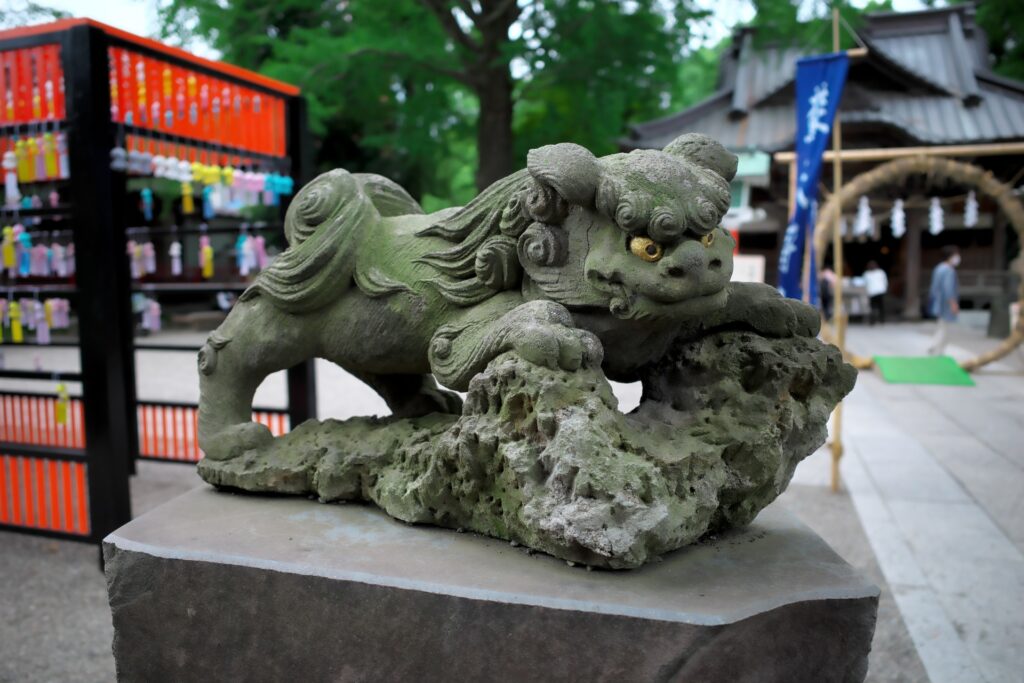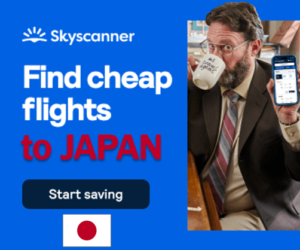Konnichiwa! Komainu (狛犬), also known as lion dogs, are mythical creatures that have been a part of Japanese culture for centuries. These fierce and friendly guardians can be found at the entrance of Shinto shrines, Buddhist temples, and other sacred places across Japan. In this article, we’ll explore the history of komainu, their symbolism in Japanese culture, and how they continue to play a role in Japanese culture today.
Affiliate Disclaimer: I only recommend products I would use myself and all opinions expressed here are our own. This post may contain affiliate links that at no additional cost to you, I may earn a small commission. As an Amazon Associate I earn from qualifying purchases.

Planning a trip to Japan?
The History of Komainu
The origins of komainu can be traced back to China, where similar lion-like creatures were used to guard temples and palaces. In Japan, komainu were first introduced during the Nara period (710-794), when Buddhism was introduced to the country. These mythical creatures were initially depicted as lions, but over time, they evolved into a more unique form.
During the Heian period (794-1185), komainu started to take on a more dog-like appearance, with sharp, pointed ears and a curly tail. This is where they got the nickname “lion dogs.” The reason for this change in appearance is not entirely clear, but some scholars speculate that it was due to the influence of Japanese folklore, which often featured dog-like creatures.

Komainu were originally thought to be fierce protectors of sacred places, and they were often depicted with their mouths open and fangs bared, ready to ward off evil spirits. Over time, however, they became more friendly and approachable. Today, they are seen as benevolent guardians, with one komainu representing the male and the other representing the female.
What Does Komainu Symbolize?
Komainu are rich in symbolism, and their presence at sacred places is meant to bring protection and good luck. Here are some of the key symbolic meanings associated with komainu:
How Are Komainu Used Today?
Komainu continue to be an important part of Japanese culture today. They can be found at the entrance of Shinto shrines, Buddhist temples, and other sacred places, as well as in homes and businesses.
Many people still believe in the protective and good luck properties of komainu, and will visit them to pray for safety, health, and prosperity. Some people even have small komainu figurines in their homes or on their keychains for protection and good fortune.

Komainu are also popular in Japanese pop culture. They are often depicted in anime and manga, and their likeness can be found on a wide range of merchandise, from t-shirts to phone cases.
One particularly famous komainu is the pair at the entrance of the famous Shibuya Crossing in Tokyo. These komainu have become a popular meeting spot for locals and tourists alike, and they have even been featured in several films and television shows.
What is the Difference Between Komainu and Shishi?
Komainu and shishi are both types of guardian lion-dog statues commonly found in Japanese culture, particularly at Shinto shrines and Buddhist temples. While they share some similarities, there are also notable differences between them:
Komainu (狛犬):
Shishi (獅子):

Wrapping it Up
Komainu have a long and rich history in Japanese culture. They started as fierce protectors of sacred places, but over time, they evolved into more friendly and approachable creatures. Today, they are seen as benevolent guardians, bringing protection and good luck to those who visit them.
The symbolism of komainu is deeply ingrained in Japanese culture. They represent balance, unity, and good fortune, and their presence at the entrance of shrines and temples is a reminder of the importance of these values.
In conclusion, Komainu are an integral part of Japanese culture, representing the values of protection, balance, unity, and good fortune. They have a long and fascinating history, and their influence can be seen in many aspects of Japanese life. Whether you are visiting a shrine or temple, or simply admiring komainu in pop culture, these mythical creatures continue to inspire and captivate people around the world.


